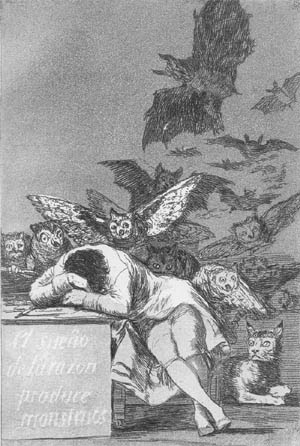The Caprichos - old archive page GO TO THIS PAGE FOR THE CURRENT INFO
Caprichos
Plate 43 |
- - - - - - - - - - - - - - - - -
- - - - - - - - - - - - - - - - -
WEB
SITE COPYRIGHT©1997-2006 ERIK E. WEEMS
IMAGES ARE COPYRIGHT TO THEIR RESPECTIVE OWNERS
http://www.eeweems.com/goya/sleep_of_reason.html
BIO | ARTWORK | BOOKS | RESOURCES FOR STUDENTS | LINKS | CONTACT | NEWS | STATS | F.A.Q.

